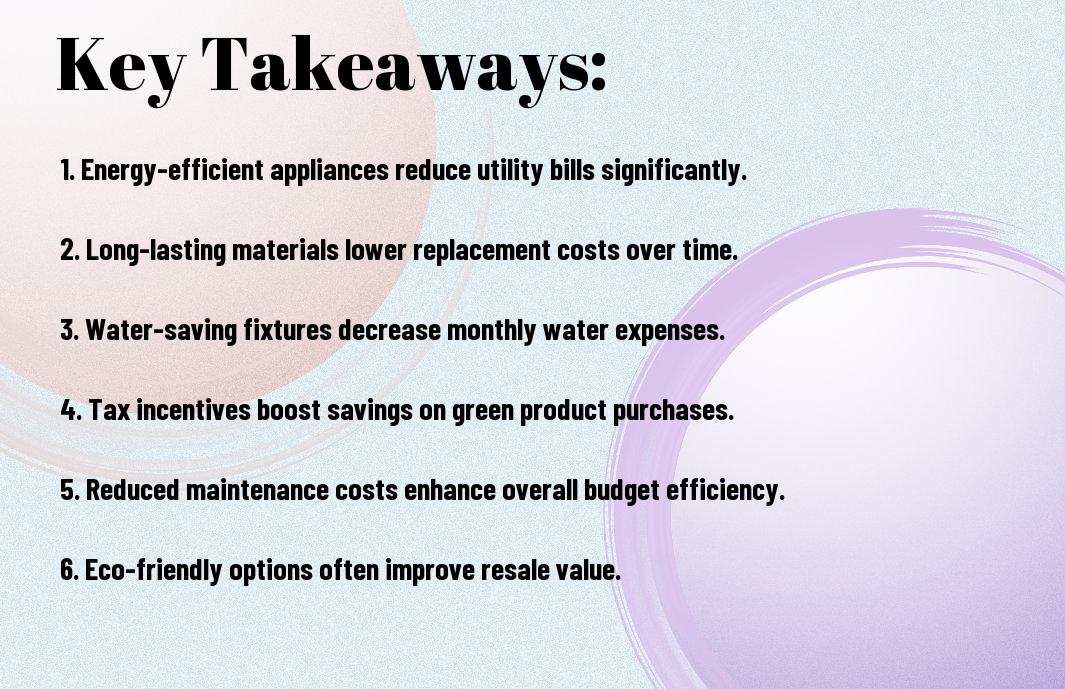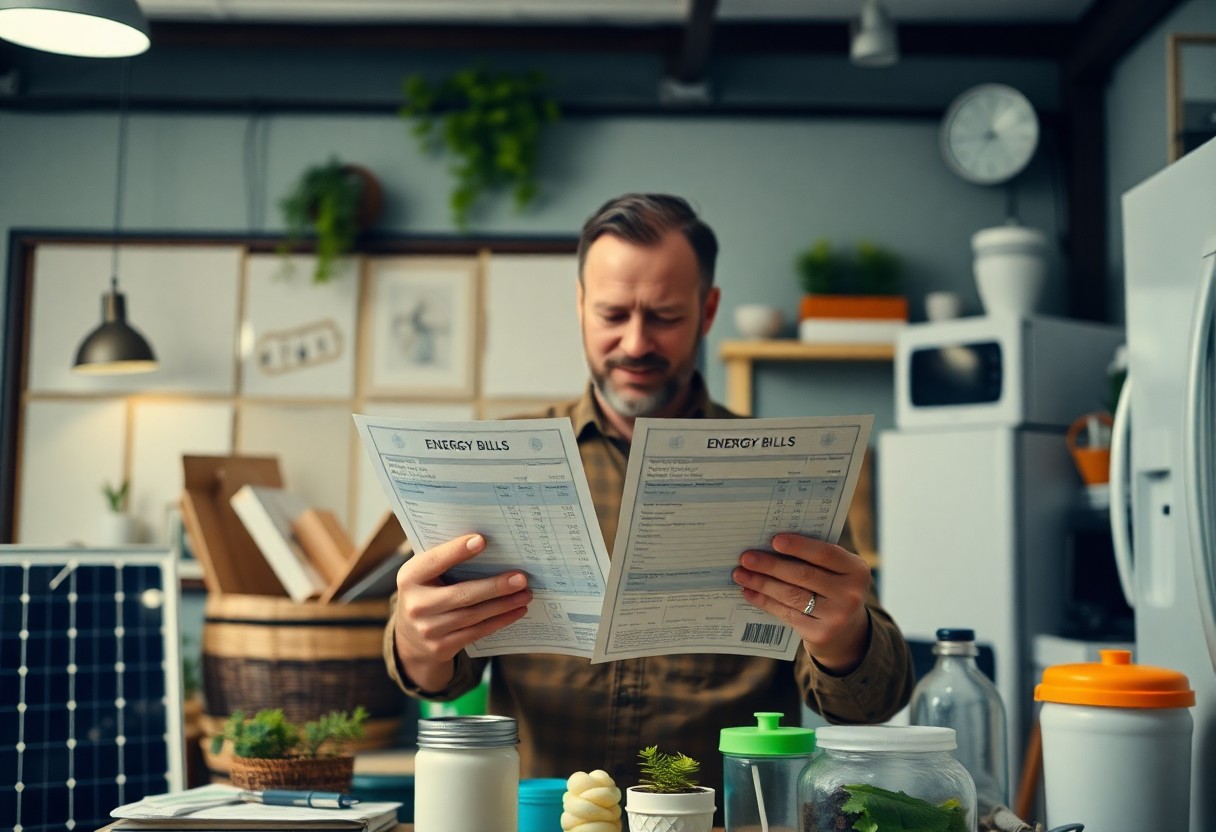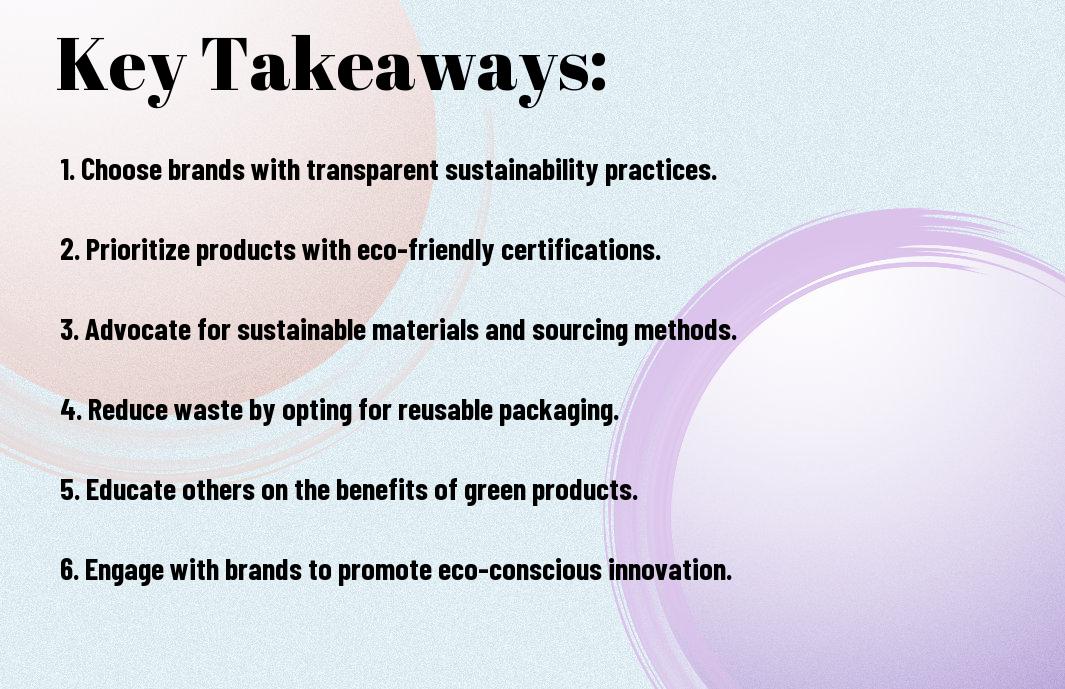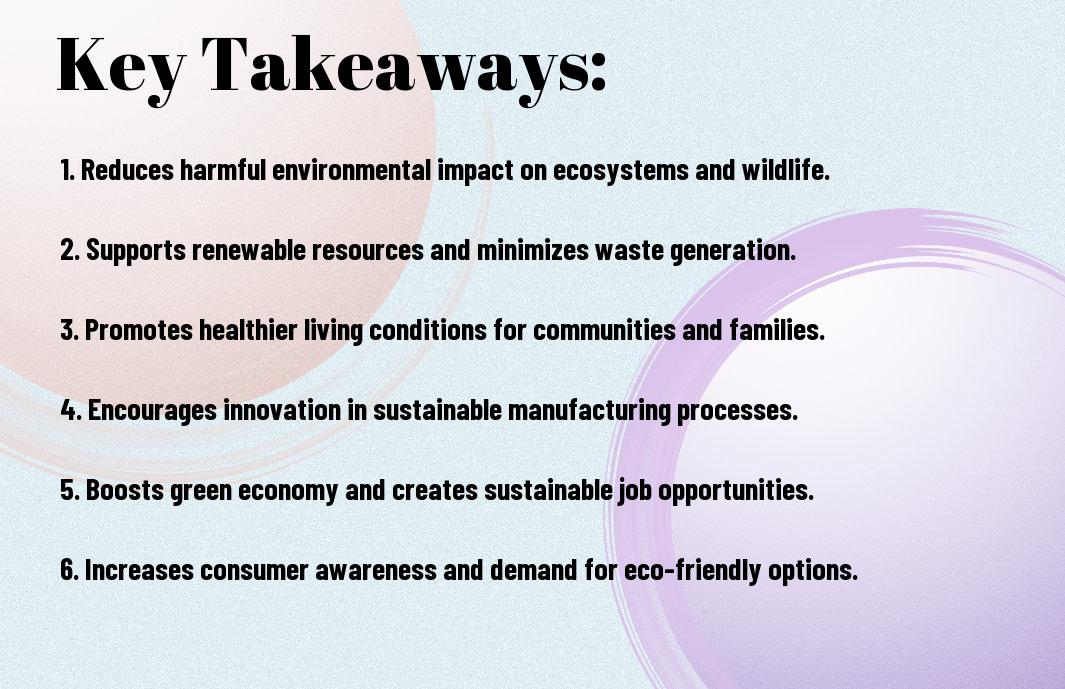As you consider making the switch to green products, you may be wondering if the investment is worth it. You’ll be pleased to know that opting for eco-friendly alternatives can have long-term financial benefits. Your decision to go green can lead to significant savings over time, from reduced energy consumption to lower maintenance costs. By choosing green products, you can enjoy a more sustainable lifestyle while also cutting down on your expenses, making it a smart choice for your wallet and the environment.
Key Takeaways:
- Using Energy-Efficient appliances and products can lead to significant Cost Savings over time by reducing Energy Consumption and lowering utility bills.
- Investing in Durable and Long-Lasting green products can minimize the need for frequent Replacements and Maintenance, resulting in long-term Financial Benefits.
- Adopting Sustainable practices and using Eco-Friendly products can also help reduce Waste and minimize the Environmental Impact of daily activities, while also saving money on Disposal Costs and potential Fines.

Benefits of Green Products
The benefits of green products are numerous, and they can have a significant impact on your wallet. By switching to eco-friendly products, you can save money in the long run and contribute to a more sustainable future.
Reduced Energy Consumption
Around your home, you can make changes to reduce energy consumption, such as using energy-efficient light bulbs and appliances, which are often green products that use less energy and last longer.
Lower Utility Bills
Products like solar panels and energy-efficient windows can help you save money on your utility bills. You will notice a decrease in your energy consumption, which translates to lower bills.
In addition, when you invest in green products that reduce your energy consumption, you will see a significant decrease in your utility bills over time, allowing you to allocate your money to other important areas of your life, and you will be able to enjoy the benefits of going green while saving money.
Long-Term Savings
If you invest in green products, you can expect to save money over time due to their energy-efficient and eco-friendly features, which lead to lower utility bills and reduced waste.
Increased Durability
Behind the scenes, green products are designed to last longer, reducing the need for frequent replacements and saving you money in the long run on purchases and waste disposal.
Maintenance Cost Reduction
Before you know it, the savings from reduced maintenance costs will add up, as green products often require less upkeep and servicing, putting more money back in your pocket.
The reduction in maintenance costs is a significant advantage of green products, as you will spend less on repairs, replacements, and servicing, allowing you to allocate your budget to other important areas, and ultimately, increasing your overall savings over time.
Environmental Impact
Many green products have a significant impact on the environment, and by using them, you can contribute to a more sustainable future. You will be reducing your carbon footprint and conserving natural resources, which is beneficial for your community and the planet.
Reduced Carbon Footprint
Eco-friendly choices lead to a decrease in greenhouse gas emissions, and as you make these choices, you are helping to reduce air pollution and mitigate climate change. You can feel good about your decision to use green products, knowing you are making a positive impact.
Conservation of Natural Resources
Impact of using green products on the environment is significant, and as you choose these products, you are helping to conserve water, energy, and land. You are also reducing waste and promoting sustainable practices that benefit your community and the planet.
A significant advantage of conservation of natural resources is that it ensures their availability for future generations. As you continue to use green products, you are contributing to a sustainable future, and you can be confident that your choices are making a positive difference in your community and the world at large.
Government Incentives
Now, when you invest in green products, you can benefit from government incentives that help offset the initial costs. These incentives are designed to encourage you to adopt eco-friendly practices and reduce your environmental footprint.
Tax Credits
Any homeowner or business owner can take advantage of tax credits offered by the government for installing green products such as solar panels or energy-efficient windows, which can help you save money on your taxes.
Rebates and Grants
Similarly, rebates and grants are available to you for purchasing green products, such as energy-efficient appliances or rainwater harvesting systems, which can help you reduce your utility bills and save money in the long run.
Hence, by taking advantage of rebates and grants, you can significantly reduce the upfront costs of green products and enjoy long-term savings on your energy and water bills, making your investment in green products a financially viable option for you.

Innovative Green Technologies
To stay ahead of the curve, you can invest in innovative green technologies that save you money in the long run. These technologies offer efficient solutions for your daily needs, reducing your environmental footprint and lowering your expenses.
Renewable Energy Sources
With the rise of renewable energy sources, you can harness the power of solar, wind, or hydro energy to power your home or business, significantly reducing your reliance on non-renewable energy sources.
Sustainable Materials
An array of sustainable materials is available for you to choose from, including bamboo, recycled wood, and low-VOC paints, which can help you reduce waste and minimize your environmental impact.
Consequently, as you incorporate sustainable materials into your daily life, you will notice a significant reduction in your maintenance and replacement costs, as these materials are designed to be durable and long-lasting, saving you money over time.
Consumer Awareness
Keep in mind that your understanding of green products plays a significant role in making informed purchasing decisions. As you become more aware of the benefits of eco-friendly products, you can make better choices that save you money in the long run.
Eco-Labeling
Around the world, you’ll find various labels indicating a product’s environmental sustainability. About these labels, it’s important to know what they mean to make an informed decision that aligns with your values and budget.
Product Certification
Prior to making a purchase, you’ll want to look for certified products that meet certain environmental standards. Before investing in a product, ensure it has a reputable certification, which can give you confidence in your choice.
Consumer trust in product certification is important for the success of green products. As you research and understand the different certifications available, you’ll be able to identify products that not only reduce your environmental impact but also offer long-term cost savings. You can then make informed decisions that benefit both your wallet and the planet.
Conclusion
Upon reflecting on the benefits of green products, you’ll find that they save you money over time. By investing in energy-efficient appliances and sustainable materials, you reduce your expenses in the long run. You can learn more about the financial advantages of eco-friendly choices at Eco-Savvy Savings: How Going Green Can Save You Money, and make informed decisions to boost your savings and support your environmentally conscious lifestyle.
FAQ
Q: What are green products and how can they help me save money over time?
A: Green products, also known as eco-friendly products, are items that are designed to have a reduced impact on the environment. They can help you save money over time by reducing your energy consumption, water usage, and waste production. For example, energy-efficient light bulbs and appliances can lower your electricity bills, while eco-friendly cleaning products can reduce the need for frequent replacements and minimize waste disposal costs.
Q: How do green products reduce energy consumption and save me money on my utility bills?
A: Green products such as solar panels, energy-efficient windows, and LED light bulbs are designed to reduce energy consumption by using less power to operate. For instance, LED light bulbs use up to 90% less energy than traditional incandescent bulbs, which can significantly lower your electricity bills over time. Additionally, energy-efficient appliances like refrigerators and air conditioners can also reduce energy consumption and save you money on your utility bills.
Q: Can green products help me save money on maintenance and replacement costs?
A: Yes, green products can help you save money on maintenance and replacement costs. Eco-friendly products are designed to be durable and long-lasting, reducing the need for frequent repairs and replacements. For example, bamboo flooring is more resistant to wear and tear than traditional hardwood flooring, which can reduce maintenance costs over time. Additionally, green products like low-flow showerheads and toilets can reduce water consumption and lower your water bills.
Q: How can I determine which green products will save me the most money over time?
A: To determine which green products will save you the most money over time, you should consider the cost of the product, its energy efficiency, and its expected lifespan. Look for products with the ENERGY STAR label, which indicates that they meet energy efficiency standards set by the U.S. Environmental Protection Agency. You can also calculate the payback period of a product by dividing its cost by the amount of money it saves you per year. This will help you determine which products will provide the best return on investment.
Q: Are green products more expensive than traditional products, and is the cost savings worth the initial investment?
A: While some green products may be more expensive than traditional products, many of them can provide long-term cost savings that outweigh the initial investment. For example, solar panels may require a significant upfront investment, but they can save you money on your electricity bills for years to come. Additionally, many green products, such as energy-efficient appliances and LED light bulbs, are competitively priced with traditional products and can provide significant cost savings over time. It’s also worth considering that the cost of green products is decreasing as technology improves and demand increases, making them more accessible to consumers.









